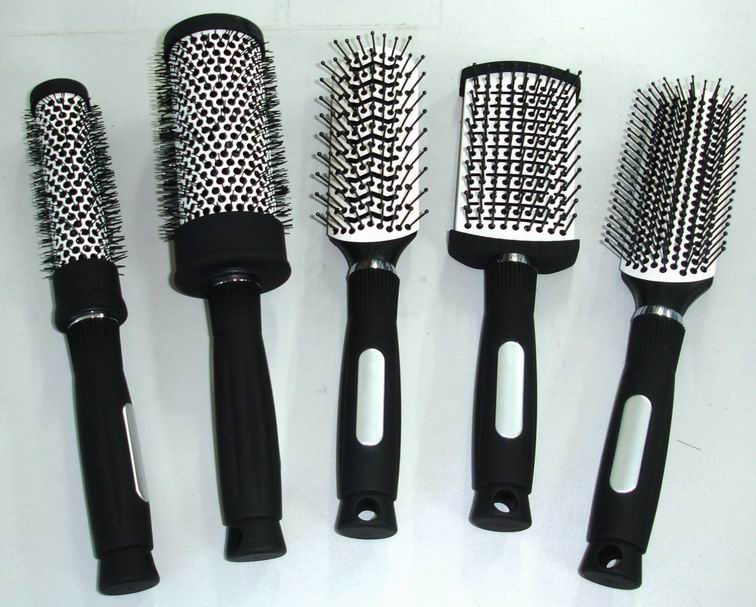
Playing Matchmaker: Hair Meets Hairbrush
For the uninitiated, the idea that different types of hair require entirely different brushes and brushing philosophies makes sense, but might not have been known. Everyone knows that you’re supposed to comb before you brush, and that brushing and combing are not the same thing – but did you know the benefits of using a round brush for blow-drying? A boar bristle brush in naturally oily hair? A cushioned hairbrush for long hair?
The Right Tool for the Task
Hairbrushes come in different shapes and sizes, but it’s the shapes that mostly matter here-.
Paddle Brush. Paddle brushes, also known as flat brushes, are specifically designed to help straighten your hair. They’re also often used with blow driers to prevent your hair from frazzling up into a bunch of curls. The instructions are simple – keep the blow drier aiming down the length of your hair, and brush accordingly.
Round Brush. If you don’t want straight hair, but are looking for a little bit of curl and that exceptional volume, then get the round brush. Unlike the paddle brush, the round brush allows you to curl your hair away from the initial brush stroke, pulling at it just enough to add volume and air into your hair rather than just flatten and straighten it with a paddle brush.
Teasing Brush. Aside from paddle brushes and round brushes, the final brush you’ll need in your inventory is the teasing brush. This a much, much smaller more rigid brush with nylon or plastic bristles/teeth, and it’s designed for the explicit purpose of brushing up on a targeted area of your head of hair, especially when you’ve already styled yourself. You’d simply like to fix or adjust without having to redo the whole thing because your brush strokes were too broad.
Additionally, a teasing brush can be used at the root base of your hair to raise it up without much effort, due to its small and precise nature.
Comb. A little additional brush to have in your repertoire isn’t actually a brush, but rather, the comb. Combs are good as a pre-brush tool to get rid of tangling, or to help with styling in ways a teasing brush can’t. Always have a comb ready. A pick comb works best for really curly hair, if a regular comb won’t do. Did you know that curly hair comes from having asymmetrical follicles, as per Popular Science?
A Final Word on Bristles
Before you choose a hairbrush, it’s important to know that hairbrushes come with all sorts of bristles, and knowing which to choose is handy when confronted by offerings like those at Fuller.
As per Hairfinity, nylon bristles are preferred for fine hair, because they can achieve a strong grip on your hair. If your hair gets caught too easily, then boar bristles are better. Hair that isn’t caught as easily may be good for porcupine bristles (which describe a style – that’s plastic). Porcupine bristles as per Dummies also work to brush really thick hair down to the scalp.
Plastic bristles are the general go-to when you’re not sure what to go with, and you can’t go wrong with them. And there you have it! All you need to do now is choose the right brush for your hair.
